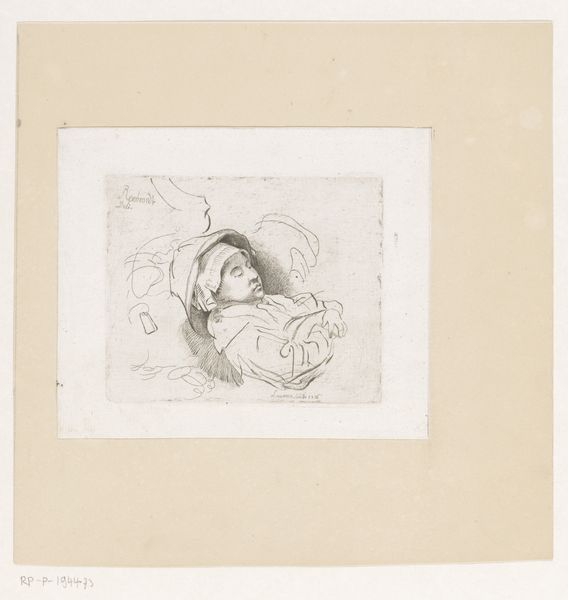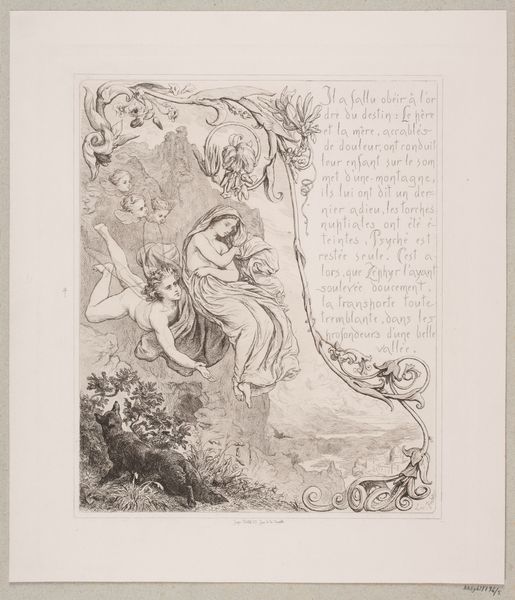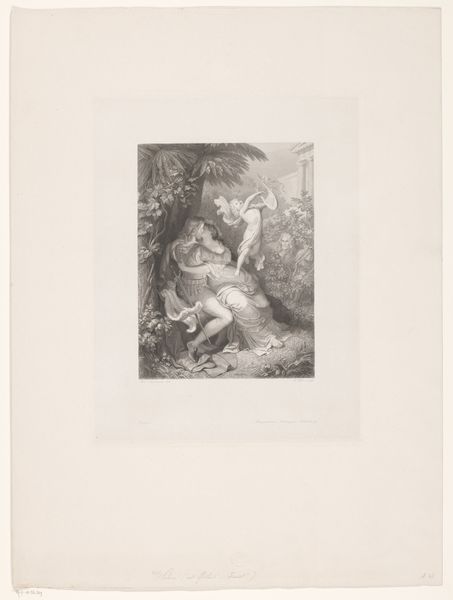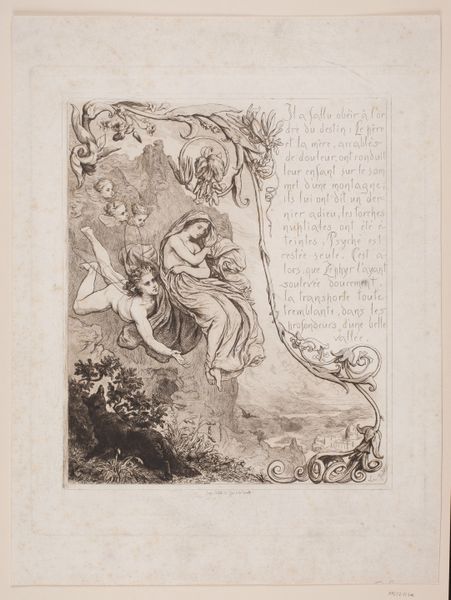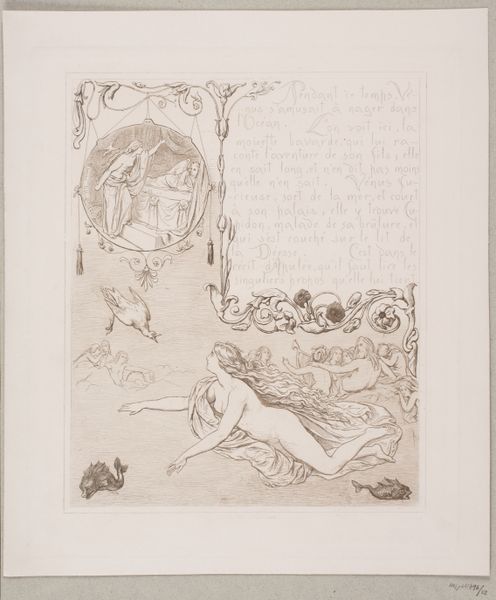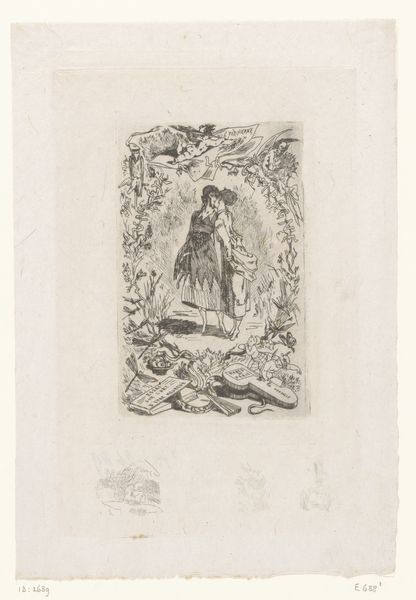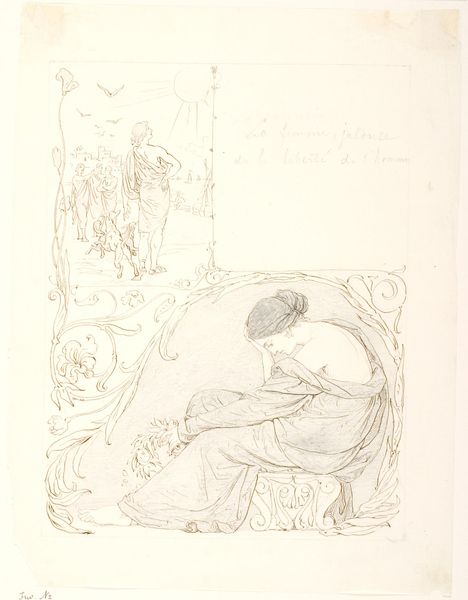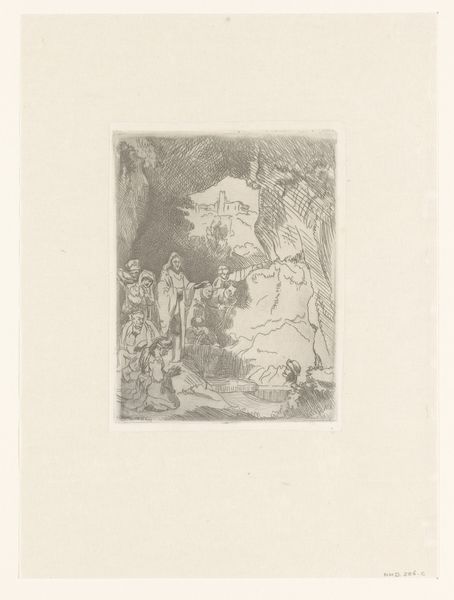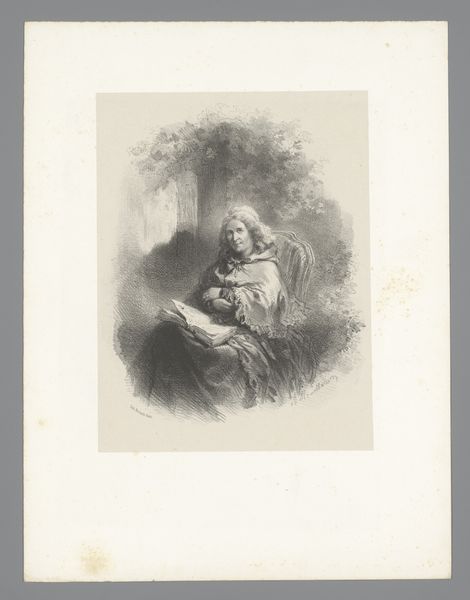
Illustration til "Lille Tuk" i H.C. Andersen, "Eventyr og Historier", Bind 2 1870 - 1873
0:00
0:00
Dimensions: 201 mm (height) x 144 mm (width) (bladmaal)
This is H.P. Hansen’s illustration for H.C. Andersen’s tale "Little Tuk," created in the 19th century. It captures a child asleep, framed by scenes from his dreams. During Hansen's time, illustrations like these served not only to depict the story, but also to reinforce cultural values and societal expectations. Consider how the romanticized vision of childhood innocence, contrasts with the realities of child labor and poverty prevalent in the 1800s. Notice how the dreams are filled with classic fairy-tale figures like knights and castles. Hansen uses this framework to subtly comment on social mobility. Are these dreams a form of escapism for a child facing a harsh reality? Or are they a reflection of the aspirations and values instilled in him by society? Ultimately, Hansen invites us to consider the complex interplay between the innocence of childhood and the societal forces shaping young minds. What does it mean to dream, and what role do our dreams play in navigating the world around us?
Comments
No comments
Be the first to comment and join the conversation on the ultimate creative platform.
